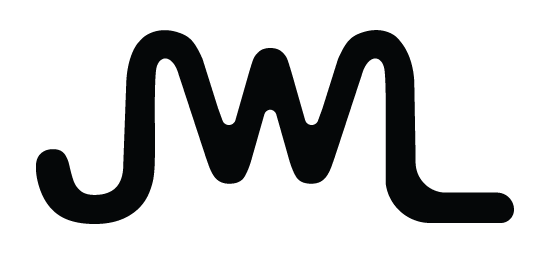
PROBLEM
People who need to track their macro-nutrients find it hard to maintain monitoring what they eat to achieve any desired results.
For certain groups of people, such as people with type I diabetes or type II diabetes, monitoring macro-nutrients and daily carbs-counting is essential. However, tracking macro-nutrients and fulfilling daily macro needs is confusing and time-consuming. How can I help people track their macros to achieve their fitness and health goals?
TIMELINE
2 months
ROLE
UI/UX, Wireframing, Research, Prototyping, Product design
TOOLS
Figma, Protopie, Photohshop, AfterEffects
SOLUTION
A one-stop-shop for goal-driven people to set up macro targets, plan and order meals, evaluate how they feel after eating, and track their progress.
Effectively minimize food choices, passively collect dieting data, detect eating patterns and help users to develop healthy relationships with food
a Local Cafe
Daily Meal Delivery
a Mobile App



SECONDARY RESEARCH/ COMPETITIVE ANALYSIS / USER RESEARCH
Using research to understand controversies and risks with diet trackers, learn from users, and find a gap in the market.
I have conducted secondary research, competitive analysis, and user research to understand controversies associated with diet tracking, what is currently available in the macro-tracking market, and users’ experience with macro trackers.
Key Insights:
Tracking diet might elicit more anxiety.
Diet trackers tend to reduce everything to numbers.
Most macro trackers require users to manually enter information, which is one of the main reasons that users stop using the app to track macros.
Restaurants usually don’t provide macro information, which also makes it hard for users to track their macros.
Macro tracking is a temporary commitment. Once users detect their eating patterns, they will stop using the macro trackers if any.
Apps and products that I have studied about: (restaurants, meal kits, and macro-nutrients trackers)
PERSONA
Identify pain points and opportunities.

PRODUCT POSITIONING
Help users to create personalized meal plans that are based on individual eating patterns.
Monitoring macros is not the ultimate goal for users. It is a means for them as a part of a larger intervention, like weight loss or maintaining blood sugar levels. In its nature, it is to understand their body and form a healthy relationship with food.
Dieting can lead to deprivation, rebellion, and rebound weight gains. During my research on healthy relationships with food, I have come across the term called “intuitive eating”, which refers to trusting your body to make food choices that feel good for you, without judging yourself or the influence of diet culture. A simple act daily, such as an intuitive eating food journal, will help people to observe the connections between the foods they eat and how they feel both physically and mentally, which will reinforce them to make good choices on food in a long term.
A food and feeling journal developed by Intermountain Healthcare to help users to practice mindful eating/intuitive eating.
BUSINESS MODEL
A product that responds to user needs on different levels.
Macro counting is important, but not everyone needs to track closely with macros everyday. Structuring the product based on user needs on different levels will help the product to impact a broader scope of people.

USER FLOW
Design through user’s perspective.
PRODUCT
Features-prioritizing based on user research.
Content Personalization
Meal Planning
Hybrid Evaluation Method
Data Visualization
Curates goal-oriented content for users to achieve their health goals. Helps users to plan meals ahead to meet their macro goals Utilizes a combination of qualitative and quantitative methods to help users evaluate and track meals.Utilizes data visualization to display meal macro information and meal evaluation, facilitating users to detect their eating patterns and check on their progress.
DESIGN DECISIONS
Create a personalized landing page to strengthen user’s motivation to achieve health goals.

Visualize data that are essential for users to keep track of based on user research and interviews.

Create an easy experience for users to plan and evaluate meals.
FINAL DESIGN
Calculate your Macro Goals.
Start to be conscious of your nutrient needs by calculating your macros. This macro calculator estimates the macronutrient needs of a person based on age, physical characteristics, activity level, and body-weight goals.
Build your meals to meet your Macro goals.
Each dish is provided with detailed information on calories, carbs, protein, fat, and fiber. You can also customize ingredients and the amount of ingredients to meet your macro goals.
Evaluate your feeling and discover your eating pattern.
By reflecting on how the food makes you feel, you will start to observe what food is pleasing to you and nourishing to your body, helping you to develop the style of eating that fosters mental and physical health.
Plan ahead your weekly meals and track your progress.
Once you are comfortable with your food choices or detect your patterns, go ahead to plan your meals. No need for manual logging; record your meals with a simple click and keep track of your progress along the way.

PROTOTYPE
Food & Mood Journal - Order
Evaluate the previous meal and record how you feel afterward.
The order menu will reflect your note on the meal.
Detect your eating pattern and make an informed meal decision.
“Recording my macros has never been this easy! It helps me to trust my guts, be mindful of what my body feels after eating, and keep making informed meal decisions. “
A one-stop shop on your mindful eating journey.
Set up your personal Macro Goals.
Plan and order meals that catered to your macro needs.
Record your mood & food journal and track your macro goals progress along the way.
Each feature is interrelated to form a positive feedback loop.

























